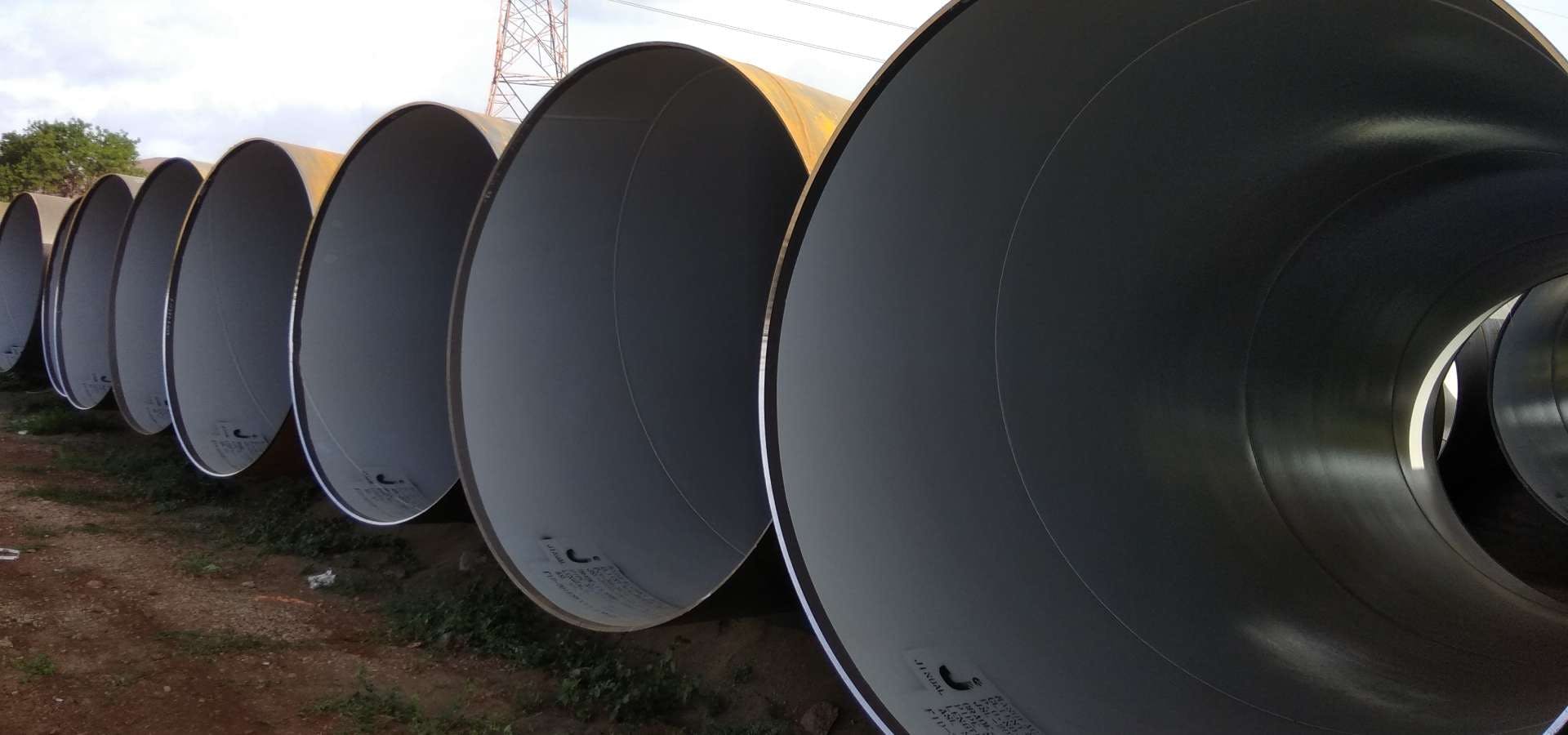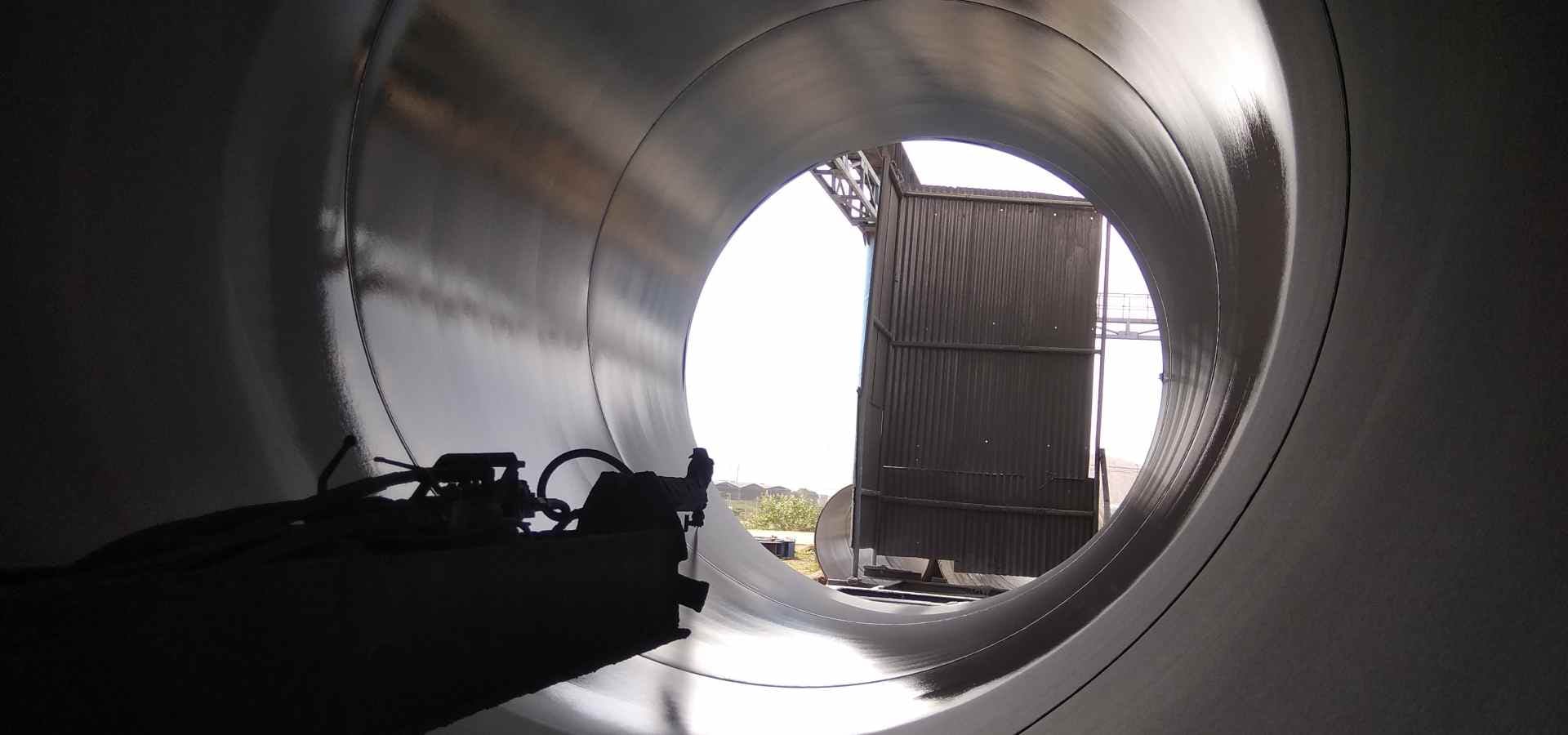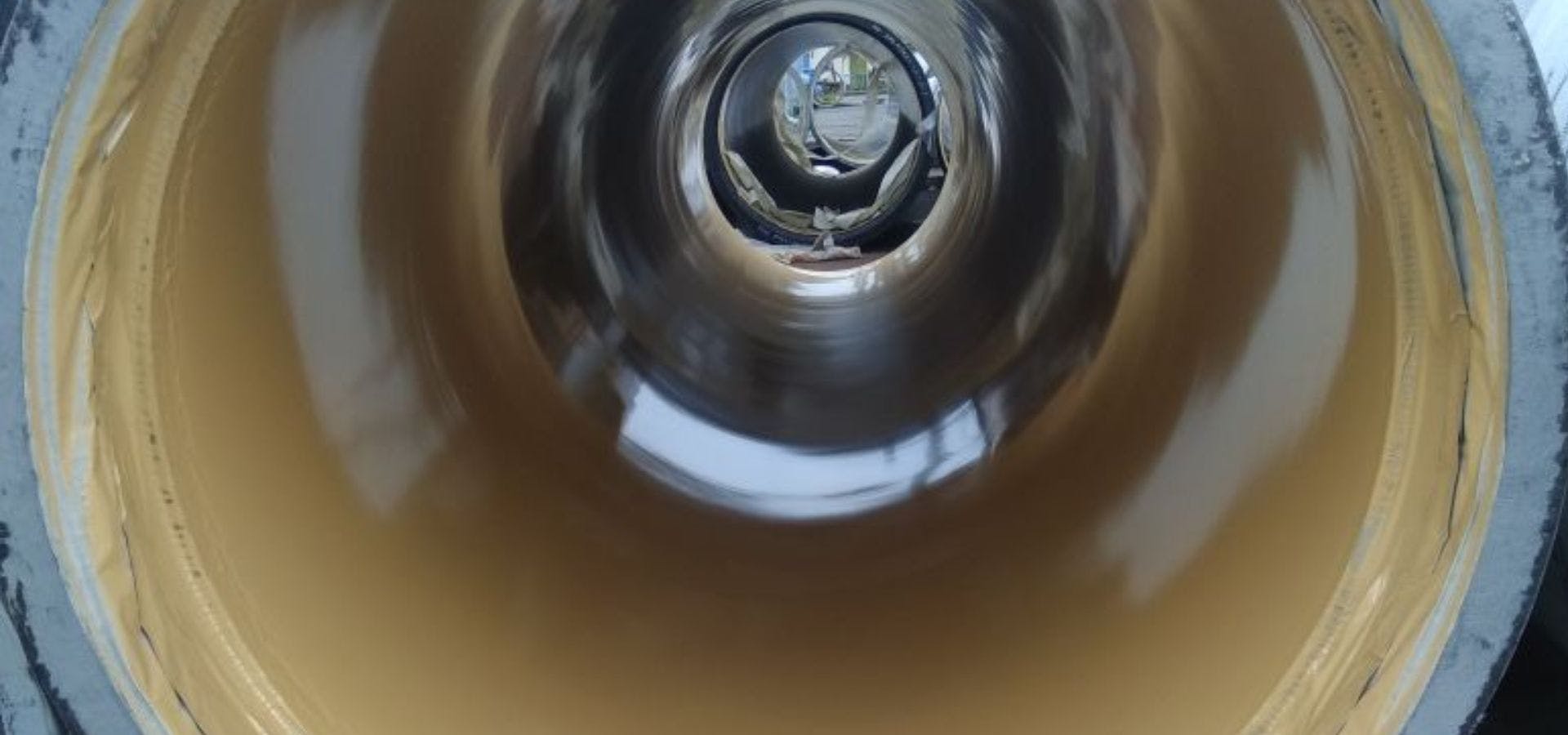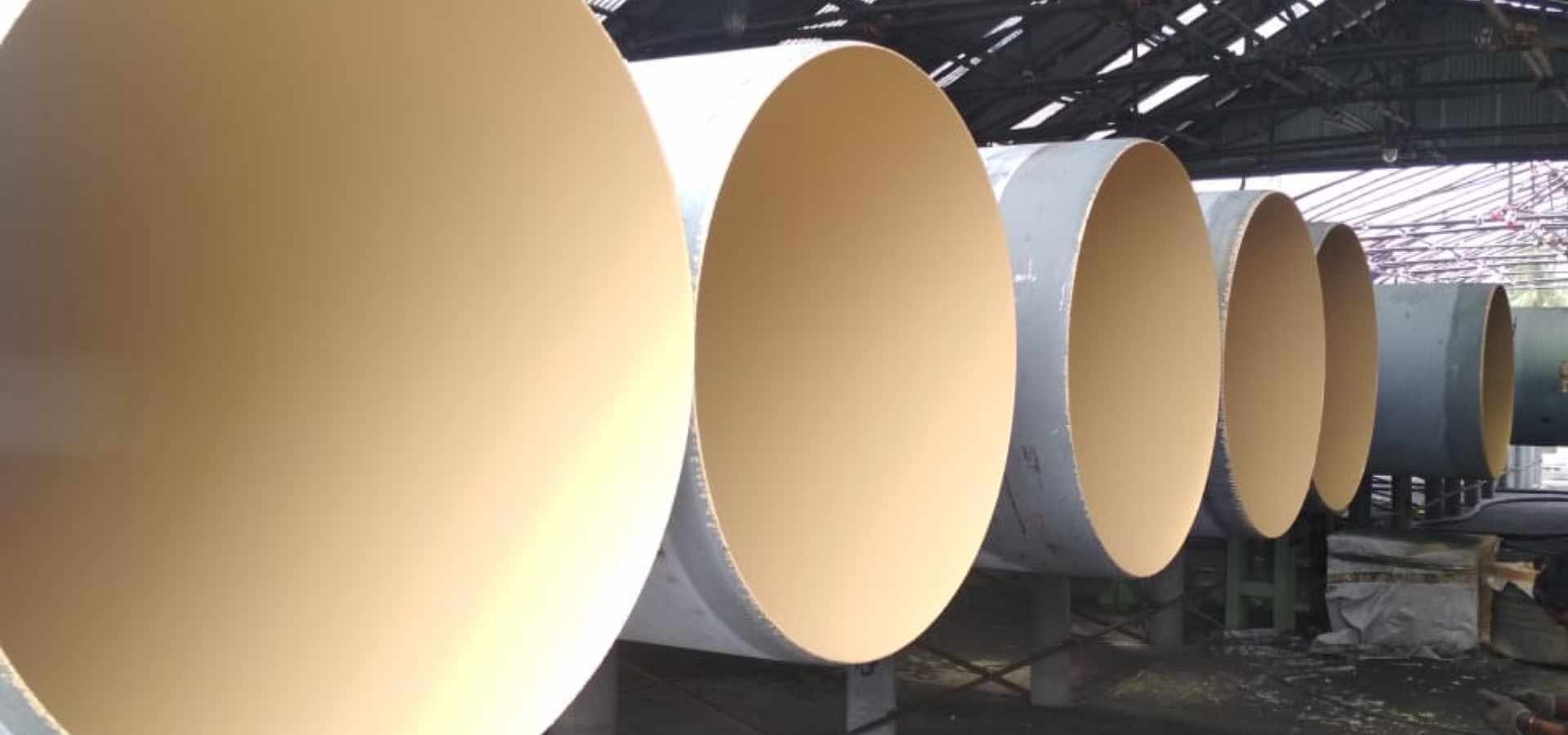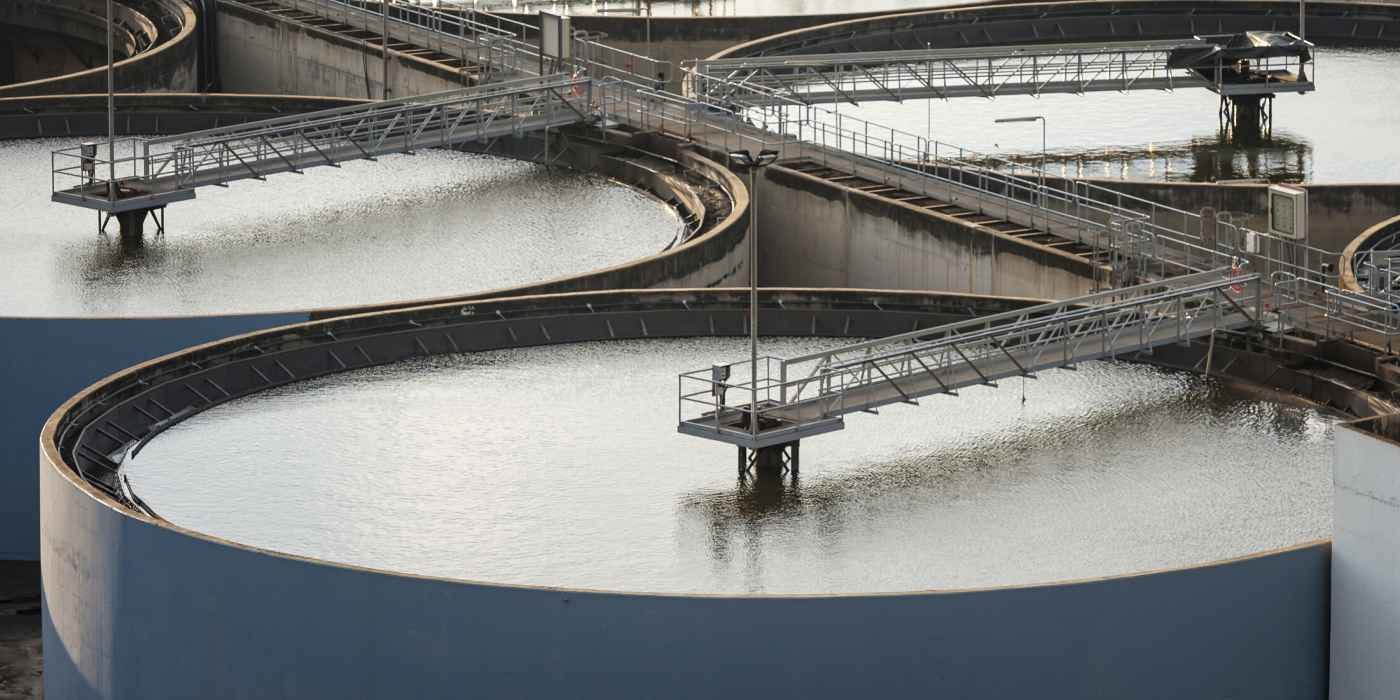
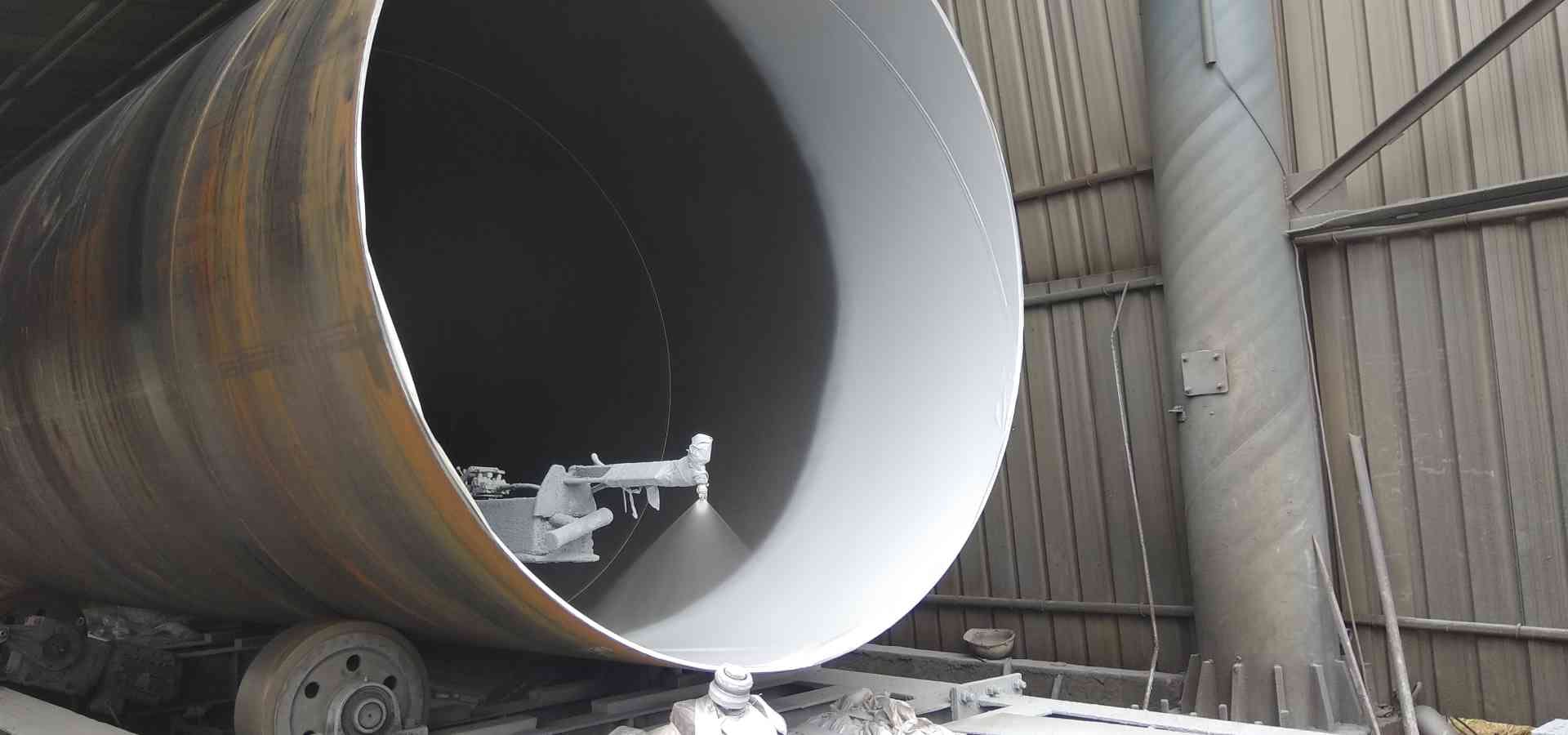
Water & Wastewater
Carbon Steel (Mild Steel) Pipes
100% Solids Polyurethane Coatings are ideal solutions for long lasting protection of carbon steel pipes from external corrosion in buried environment and internal corrosion from transmission water. Many international customers follow ANSI/AWWA C 222-18 “Polyurethane Coatings and Linings for Steel Water Pipe and fittings.” Purethane ® NXT exceeds the requirements of the standard. The particularly exceptional feature of Purethane ® NXT is its very low water absorption in continuous immersion service. Saturation weight gain in water < 1.20%. Competing products will gain 2-3% or more without achieving saturation gain. Although the standard prescribes a DFT of minimum 625 Microns, most customers specify in the 625 to 1250 micron range depending upon pipe diameter. For internal surface, the standard specifies 500 microns minimum although higher thicknesses are often used for longer service life and a more robust system. Purethane ® NXT has been used on hundreds of kilometres of large diameter water and wastewater pipelines. Snap Set version (tack free about 20-60 seconds) is applied on skew conveyor systems for high output continuous production of 6,000-8,000 sq. metres per day or more.
Minimal additional investment in spray equipment is required for conversions of existing coating plants. Any existing plants only need to have a blast cleaning facility and a skew conveyor system for external coating, whereas for internal lining, a blast cleaning facility with a pipe spinning unit for internal lining is required. Our experienced application division will supply all the necessary spray and automation and supervise the set up for flawless operation from day one! We are proud to say that this application support is unrivalled in the entire industry.
Potable Water Applications
Highly inert and non-toxic with negligible leach rate allows use in drinking water systems. Certified for potable water under WRAS BS 6920, Singapore SS 375, and other standards. Total Organic Carbon (TOC) is < 10 μg/ Litre (or < 10 Parts per Billion). Competing products will test at 2.00 mg/L (2 parts per Million). TOC can be covered into THMs (Trihalomethanes) and HAA5 (Haloacetic Acid) which have high health risk. No hazardous chemicals are used in Purethane NXT. Epoxy coatings contain Bisphenol A with known negative endocrinal/female reproductive effects and are already covered under legislation such as California proposition 65. In addition to that, they also extract high amounts of TOC (Total Organic Carbon) in the water.
Ductile Iron Pipelines
100% Solids Polyurethane Coatings are the international product of choice for external coating and internal lining of Ductile Iron pipes. Applicable standards are BS EN 15655-1:2018 (Polyurethane lining of pipes and fittings) and EN 15189:2006 (External Polyurethane Coatings for Pipes). Purethane ® NXT again exceeds the requirements of both standards. Normally. external coating is applied @ 1,000 Micron (standard specifies > 700 Microns) and internal lining @ 1,200 Microns (standard specifies 800 Microns for water and 800 to 1000 Microns for wastewater, depending upon pipe diameter).
Coating of Ductile Iron pipes provides a special challenge for coating application. The external surface is highly textured, and the coating needs to provide equal thickness over peaks and valleys. The internal surface is very rough and porous and needs grinding as a precursor to the lining process. Specially designed Polyurethane lining will convert the exceptionally rough surface to a smooth, glossy mirror-like surface with no pinholes. Amchem is OEM to the biggest ductile iron pipe producers in the world. Other than coating materials, we provide technical assistance for application of our coatings. We also supply all the necessary spray and automation and supervise the set up for flawless operation from day one! The application support we provide has been and will continue to be unmatched in this industry.
Potable Water Applications
Highly inert and non-toxic with negligible leach rate allows use in drinking water systems. Certified for potable water under WRAS BS 6920, Singapore SS 375, and other standards. Total Organic Carbon (TOC) is < 10 μg/ Litre (or < 10 Parts per Billion). Competing products will test at 2.00 mg/L (2 parts per Million). TOC can be covered into THMs (Trihalomethanes) and HAA5 (Haloacetic Acid) which have high health risk. No hazardous chemicals are used in Purethane NXT. Epoxy coating contains Bisphenol A with known negative endocrinal/ female reproductive effects and are already covered under legislation such as California proposition 65. In addition, they extract high amounts of TOC in the water.
Treatment Plants (and Concrete Pipes)
Sewage collection and treatment systems face very adverse conditions due to generation of Hydrogen Sulphide which combines with water vapour to produce Sulphuric Acid. The acid will corrode collection pipeline (crown areas), manholes and treatment plant structures like Digesters. The problem is exacerbated by microbiologically induced corrosion (MIC). Industrial effluent treatment plants have a complex mix of corroding chemicals. Water treatment plants will have high dosing of corrosive Chlorine which will lead to rebar corrosion. Further detail can be obtained from SSPC: The Society for Protective Coatings, Technology Guide 27: “Recommended Performance Properties for Liquid-Applied Organic Polymeric Coatings and Linings for Concrete Structures in Municipal Wastewater Facilities”. Purethane ® coatings hold up very well to these environments. They have a long and successful track record in the sanitation industry.
Purethane ® will provide a lasting protective system to new concrete structures and concrete pipe. Typical structures include — Bar Screen Area, Grit Chambers, Primary Clarifiers, Aeration Tanks, Digester Roofs, Gas Holders, Sludge Processing, Waste Tanks, Ponds, etc.Coatings intended for sewage and effluent applications need to possess high chemical resistance as well as low permeability to prevent transmission of corrosive ions through the coating film. The coating needs to be applied at a thickness high enough (2.00 – 4.00 mm) to obtain a completely pinhole free coating on the rough concrete surface. The coating must also span cracks which may open in the concrete underneath the film. Purethane ® FLX meets all these criteria admirably!
A 5-year field trial by the University of Houston has shown that “Coated concrete specimens with pinholes failed sooner than without pinholes and the time to failure depended on the type of coating and pinhole size. Based on time-to-failure analysis, the selected coatings can prolong the service life of concrete by 14 and 57 times without failure. Testing coated concrete specimens with pinholes is considered to represent the critical condition in the field” (C. Vipulanandan, J. Liu/Cement and Concrete Research 35 (2005) 1754–1763)
